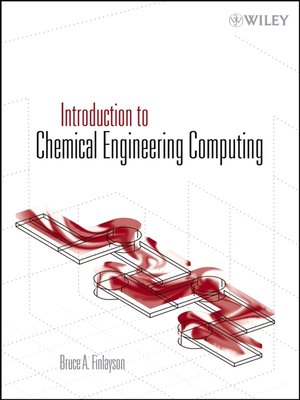
Sign up to save your library
With an OverDrive account, you can save your favorite libraries for at-a-glance information about availability. Find out more about OverDrive accounts.
Find this title in Libby, the library reading app by OverDrive.



Search for a digital library with this title
Title found at these libraries:
| Library Name | Distance |
|---|---|
| Loading... |
An innovative introduction to chemical engineering computing
As chemical engineering technology advances, so does the complexity of the problems that arise. The problemsthat chemical engineers and chemical engineering students face today can no longer be answered with programs written on a case-by-case basis. Introduction to Chemical Engineering Computing teaches professionalsand students the kinds of problems they will have to solve, the types of computer programs needed to solve
these problems, and how to ensure that the problems have been solved correctly.
Each chapter in Introduction to Chemical Engineering Computing contains a description of the physicalproblem in general terms and in a mathematical context, thorough step-by-step instructions, numerous examples,and comprehensive explanations for each problem and program. This indispensable text features Excel,MATLAB(r), Aspen PlusTM, and FEMLAB programs and acquaints readers with the advantages of each.
Perfect for students and professionals, Introduction to Chemical Engineering Computing gives readers the professional tools they need to solve real-world problems involving:







